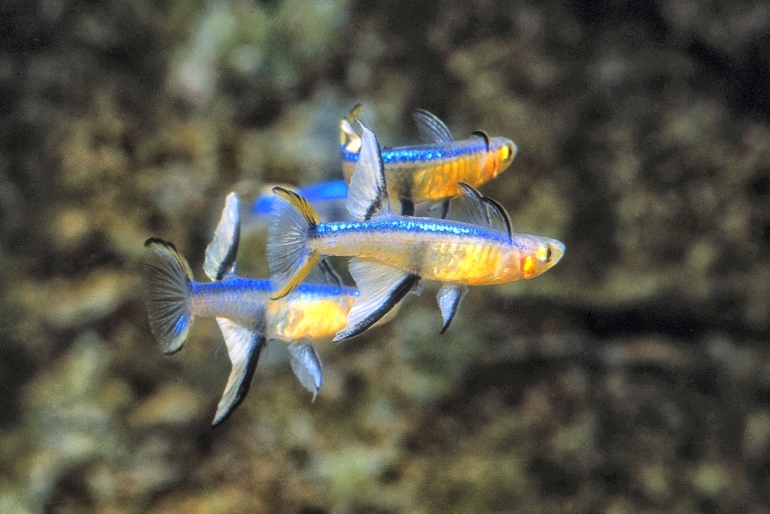
With the proper diet and top-notch living conditions, you can expect the typical lifespan of a pristella tetra to be between four to five years. You can also see their eggs develop when they spawn, making it easy to distinguish between the sexes. Generally, females are stockier than males. They have some girth around the midsection. You might also see a tinge of yellow at the caudal fork.Īuthor Note: Pristella tetras are deep-bodied tetras. The intensity of the red varies from one fish to the next. In addition to the eye-catching stripes, pristella tetras have red or pinkish tailfins. The yellow stripe is closest to the body, while the black one is in the middle. You might see the fish marketed as the x-ray tetra or x-ray pristella tetra thanks to this unique trait.īeyond the see-through body, the most stand-out feature is the coloration on the fins! The dorsal and anal fins feature three stripes of vibrant yellow, staunch black, and crisp white.

They still have some identifiable color and sheen, but they’re clear enough to see their organs as they swim. The fish’s main body is silvery and nearly transparent. These fish are distinct and have several features that make them stand out. There’s no way to mistake pristella tetras for another species. Peaceful, low-maintenance, and resilient, pristella tetras make an excellent choice for new and seasoned aquarists alike. However, most of the specimens you see for sale are commercially bred. In the wild, you can find these fish in Brazil, Guyana, Orinoco, and Venezuela. Interestingly enough, it’s the only member of the pristella genus.

The pristella tetra is part of the characidae family.


 0 kommentar(er)
0 kommentar(er)
